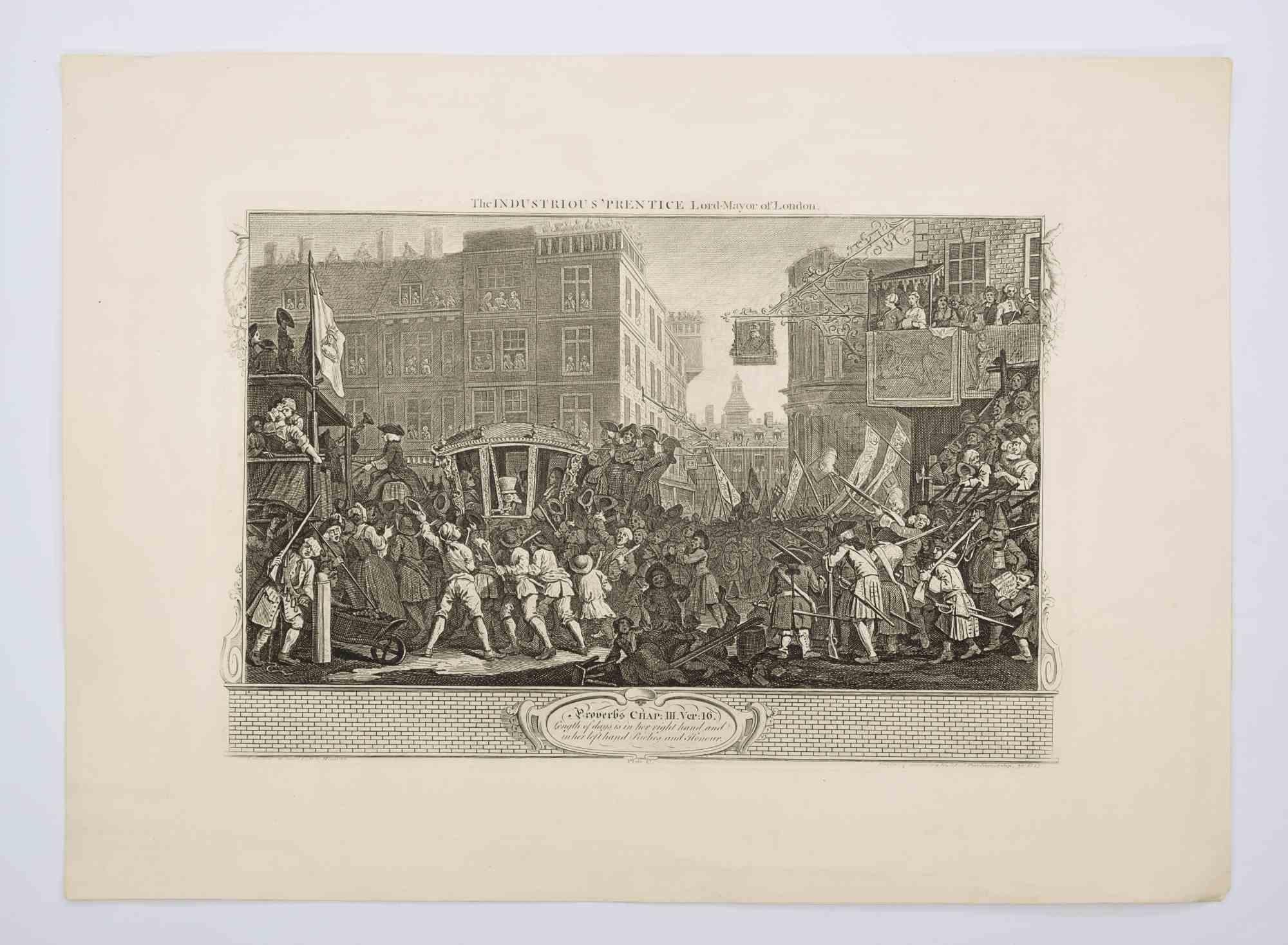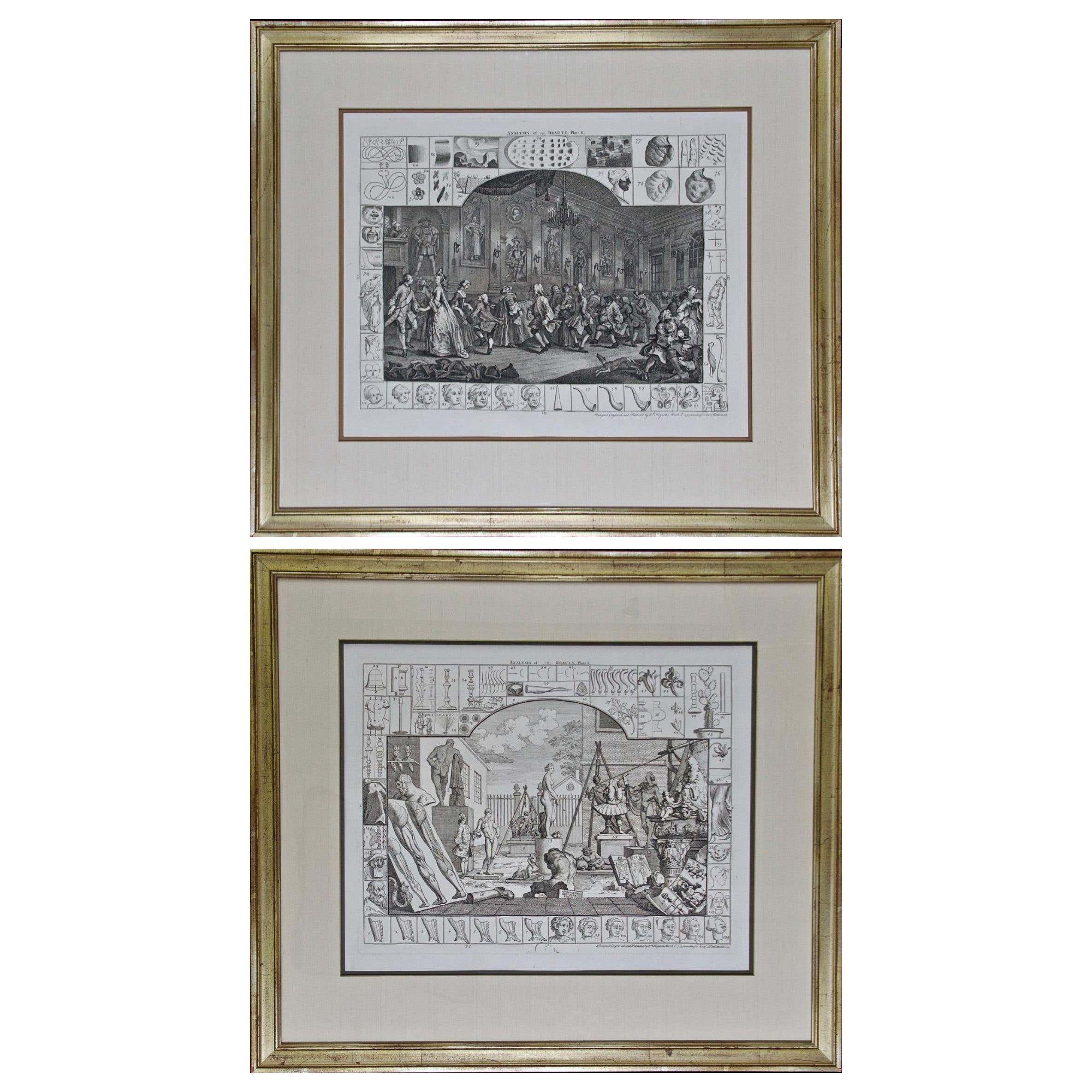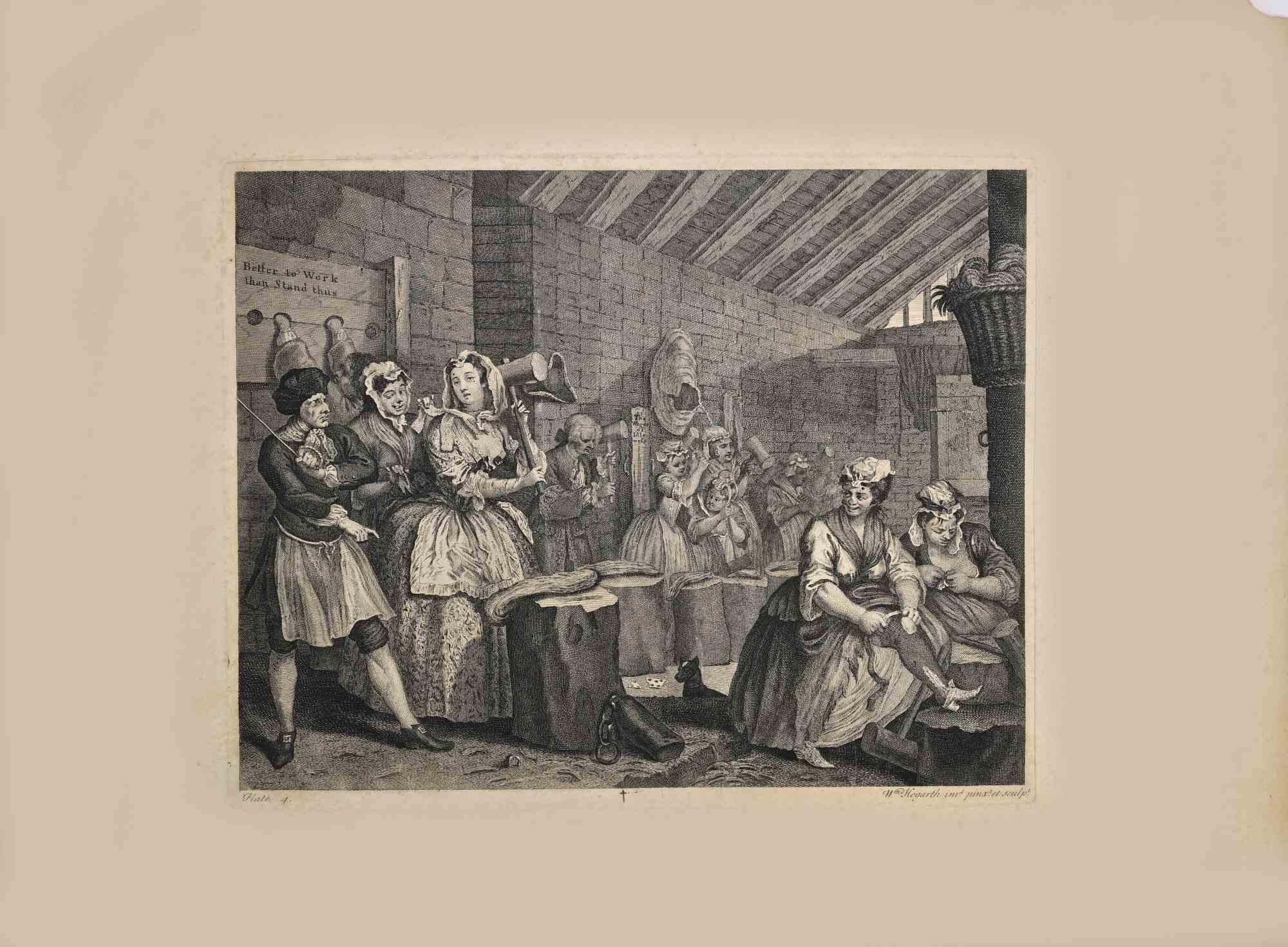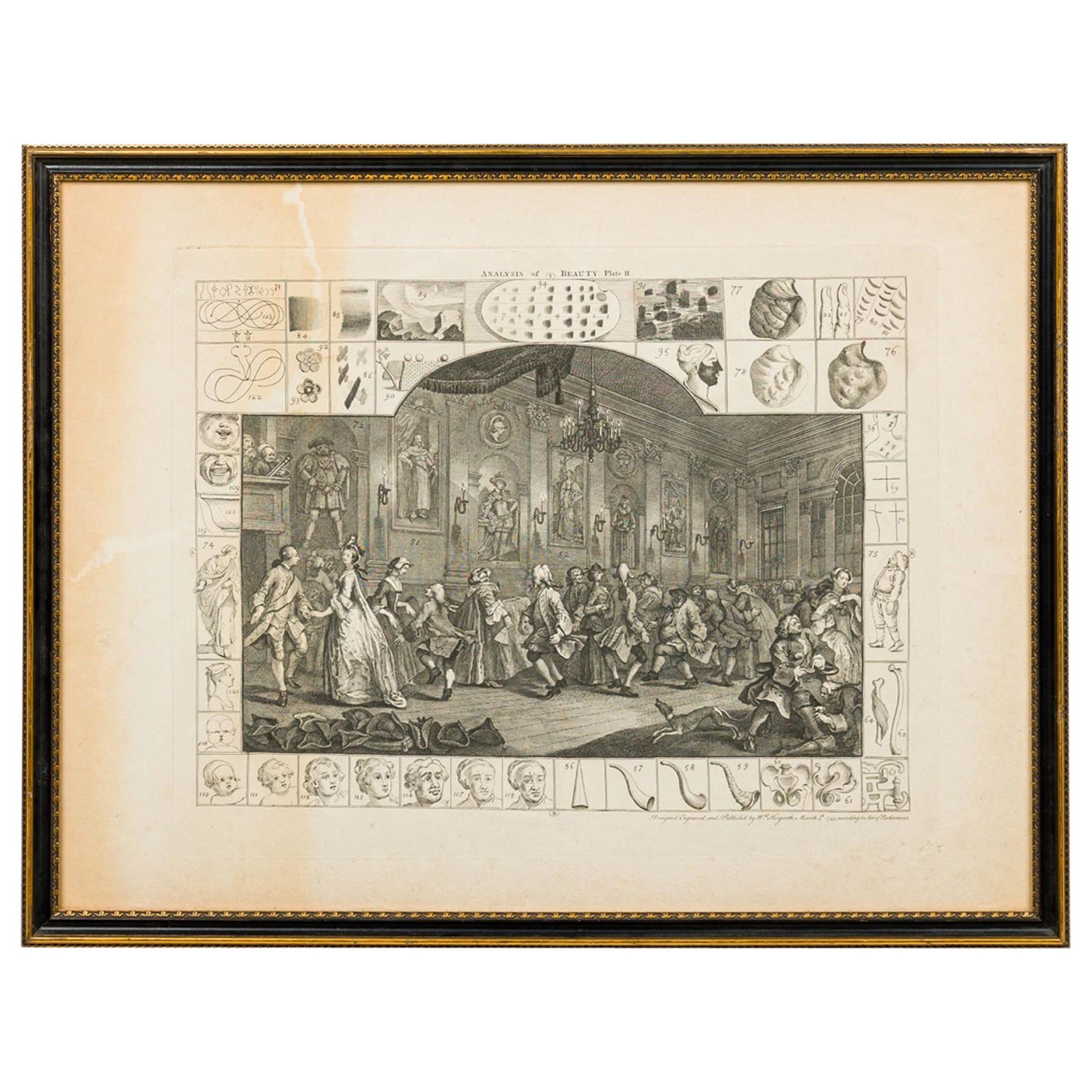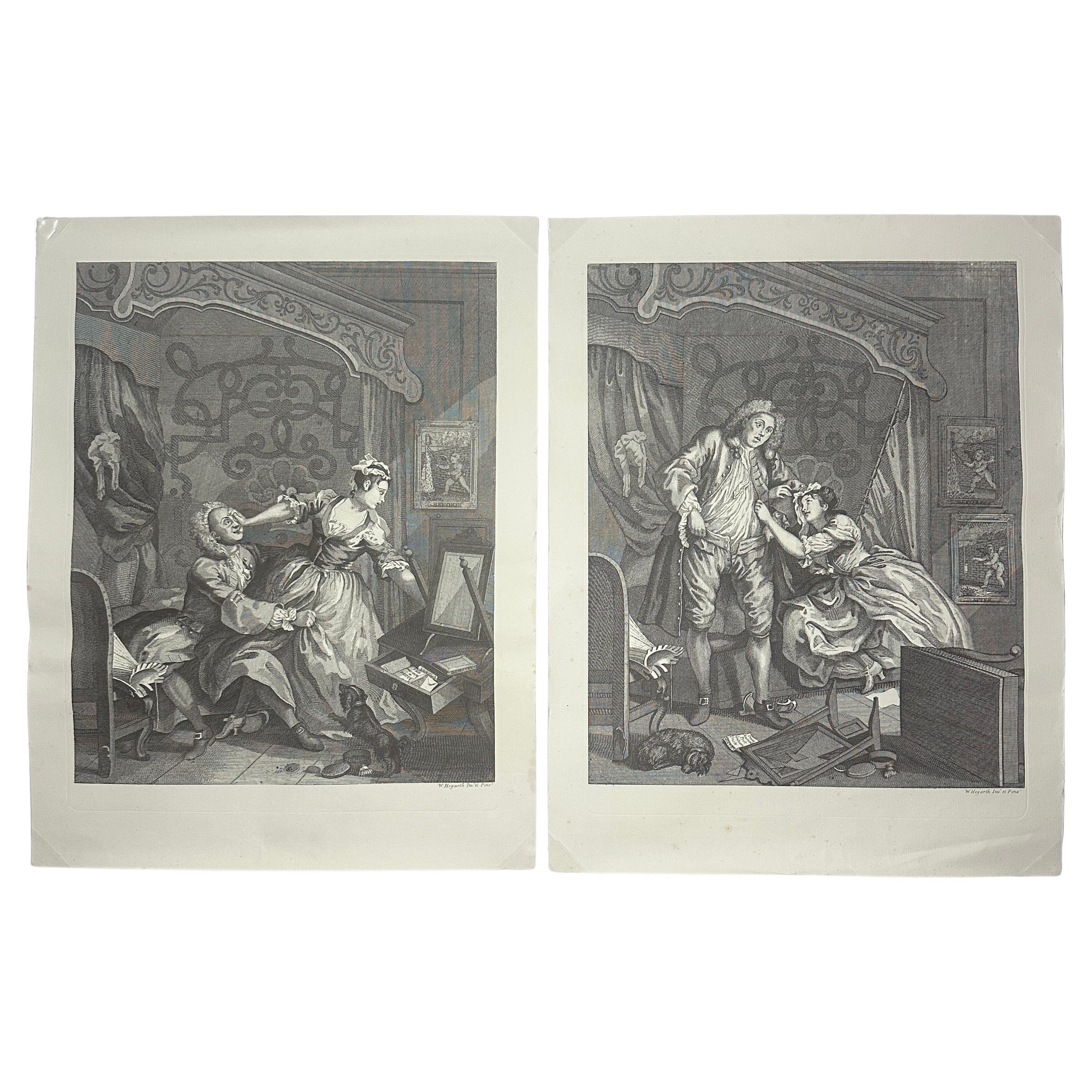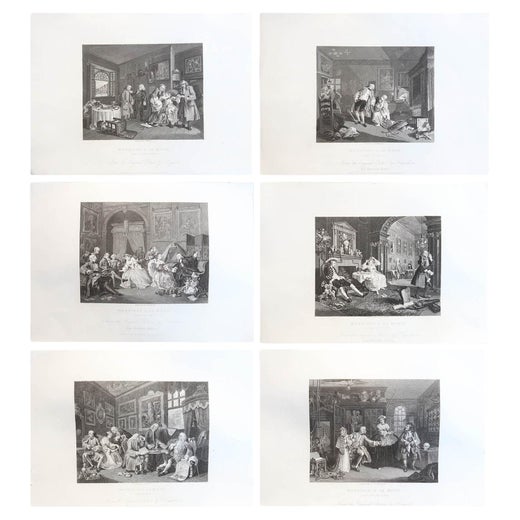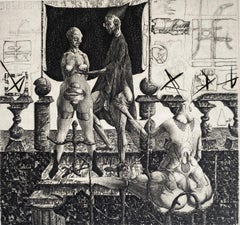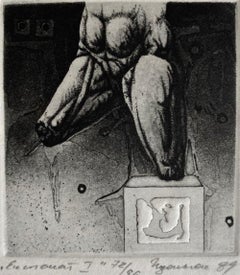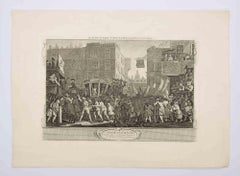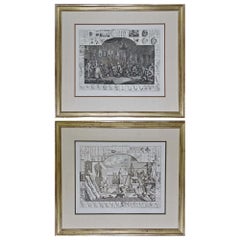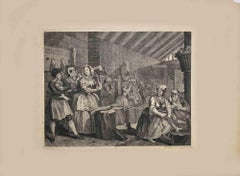Items Similar to William Hogarth . Original engravings 155 pсs., 1 piece with blend. 1822 London
Want more images or videos?
Request additional images or videos from the seller
1 of 24
William HogarthWilliam Hogarth . Original engravings 155 pсs., 1 piece with blend. 1822 London1822
1822
$3,029.28
$3,786.6020% Off
£2,285.01
£2,856.2620% Off
€2,560
€3,20020% Off
CA$4,250.61
CA$5,313.2620% Off
A$4,635.21
A$5,794.0220% Off
CHF 2,435
CHF 3,043.7520% Off
MX$55,555.82
MX$69,444.7720% Off
NOK 30,878.18
NOK 38,597.7220% Off
SEK 28,735.05
SEK 35,918.8220% Off
DKK 19,502.79
DKK 24,378.4920% Off
About the Item
William Hogarth (1697-1764)
Original engravings 155 pсs., 1 piece with blend. 1822 London
From A. Neibergs collection
- Creator:William Hogarth (1697 - 1764, British)
- Creation Year:1822
- Dimensions:Height: 25.99 in (66 cm)Width: 20.48 in (52 cm)Depth: 2.17 in (5.5 cm)
- Medium:
- Movement & Style:
- Period:
- Condition:
- Gallery Location:Riga, LV
- Reference Number:1stDibs: LU1437214411652
William Hogarth
William Hogarth (1697-1764) was an English painter, printmaker, pictorial satirist, social critic, and editorial cartoonist. Hogarth's work was extremely diverse, ranging from serious realistic paintings and portraits to satire and moralistic pieces filled with symbolism. He often communicated his moral message in a series of paintings and engravings, such as: A Rake's Progress, Marriage A-la-Mode and A Harlot's Progress. He was by far the most significant English artist of his generation and inspired a movement of English caricaturists and satirists, including James Gillray (1756-1815), Thomas Rowlandson (1757-1827), Isaac Cruickshank (1764-1811) and George Cruickshank (1792-1878). His work has been studied intensely for the greater than two and a half centuries since his death with several academic scholars focusing their careers on the analysis of every element of each of his creations.
About the Seller
5.0
Gold Seller
Premium sellers maintaining a 4.3+ rating and 24-hour response times
Established in 2002
1stDibs seller since 2020
202 sales on 1stDibs
Typical response time: 13 hours
- ShippingRetrieving quote...Shipping from: Riga, Latvia
- Return Policy
More From This Seller
View AllIn a tavern. Paper, engraving, 21x25 cm
By Adriaen van Ostade
Located in Riga, LV
In a tavern.
engraver Jan De Visscher (1933-1692)
Paper, engraving, 21x25 cm
Category
17th Century Realist Figurative Prints
Materials
Paper, Engraving
$1,372 Sale Price
20% Off
Session VI, paper/etching, 63/75, 11x12 cm, 1988
Located in Riga, LV
Session VI, paper/etching, 63/75, 11x12 cm, 1988
Category
1980s Symbolist Figurative Prints
Materials
Paper, Etching
$567 Sale Price
20% Off
Old Town, paper, etching, 32x24.5 cm
Located in Riga, LV
Old Town, paper, etching, 32x24.5 cm
Piotr Petrovich Belousov (1912-1989)
was a Soviet, Russian painter, graphic artist, art teacher, professor of the Leningrad Institute of Paintin...
Category
Mid-20th Century Realist Landscape Prints
Materials
Etching
$567 Sale Price
20% Off
Exhibit I, paper/etching, 72/99, 5.4x5 cm, 1989
Located in Riga, LV
Exhibit I, paper/etching, 72/99, 5.4x5 cm, 1989
Category
1980s Symbolist Figurative Drawings and Watercolors
Materials
Paper, Etching
Architectural Details Catalogue 4, paper/etching, 81/99, 10x9 cm
Located in Riga, LV
Architectural Details Catalogue 4, paper/etching, 81/99,10x9 cm
Category
1980s Symbolist Figurative Drawings and Watercolors
Materials
Paper, Etching
Architectural Details Catalogue 2, paper/etching, 86/99, 10x9 cm, 1989
Located in Riga, LV
Architectural Details Catalogue 2, paper/etching, 86/99, 10x9 cm, 1989
Category
1980s Symbolist Figurative Drawings and Watercolors
Materials
Paper, Etching
You May Also Like
The Industrious Prentice - Etching by William Hogarth - 1747
By William Hogarth
Located in Roma, IT
The Industrious Prentice - Lord Mayor of London is an original etching print realized by William Hogarth in 1747
Signature on the plate on the lower right, with the description on t...
Category
1740s Old Masters Figurative Prints
Materials
Etching
"A Harlot's Progress" Plate 3 Etching
By William Hogarth
Located in Houston, TX
Etching from the series titled "A Harlots Progress" by William Hogarth. The series consists of six paintings and engravings. The story is about a woman named M. Hackabout who arrived in London and started working as a prostitute. The third plate is of her getting arrest for her choice in profession. The series is a satirical story that emphasizes the dangers of being a prostitute and the health risks that come from it.
In 18th century engraving, the detail of the black mole on women and men's face is a symbol of the deadly venereal disease, syphilis. In this plate, Hackabout has already contracted the disease and that is why the black dot is visible on her forehead as well as her madam's.
In 1828, William Innell Clement published Harlot's Progress in columns on a single page of his newspaper Bell's Life in London #330. The detail with the cross seen in earlier reproductions of the engraving.
Dimensions without Frame: H 14.5 in x W 16.5 in.
Artist Biography: William Hogarth ( 10 November 1697 – 26 October 1764) was an English painter, printmaker, pictorial satirist, social critic, and editorial cartoonist. His work ranged from realistic portraiture to comic strip-like series of pictures called "modern moral subjects", perhaps best known to be his moral series A Harlot's Progress, A Rake's Progress and Marriage A...
Category
1730s Old Masters Figurative Prints
Materials
Etching
William Hogarth's "Analysis of Beauty": A Set of Two Framed 18th C. Engravings
By William Hogarth
Located in Alamo, CA
The two plates in this set were created utilizing both engraving and etching techniques by William Hogarth in 1753, originally as illustrations of his book on aesthetics, entitled "Analysis of Beauty". Due to their popularity, these plates were later published separately. The publication line in the lower right reads: "Designed, Engraved, and Publish'd by Wm. Hogarth, March 5th 1753, according to Act of Parliament." Hogarth's original copper plates were refurbished where needed by James Heath and engravings were republished in London in 1822 by Braddock, Cradock & Joy. This was the last time Hogarth's copper plates were used for printing. Most were melted during World War I for the construction of bombs.
These large folio sized "Analysis of Beauty" engravings are presented in antiqued gold-colored frames with double mats; the outer silk mats are light brown-colored and the inner mats are dark brown. Each frame measures 27.38" x 31.25" x 1.13". There is one tiny spot in the right margin of plate 1 and another in the lower margin; the latter could be from the printing process. The prints are otherwise in excellent condition.
The "Analysis of Beauty" series is in the collection of many major museums, including: The British Museum, The Metropolitan Museum of Art, The Tate Museum, The Chicago Art Institute and The Fine Arts Museums of San Francisco.
The first engraving (Plate 1) depicts a courtyard of statues which is filled with some of the most famous works of classical sculpture. The most important sculptures are surrounded by less impressive works. The Medicean Venus (#13) is in the center with a statue of Julius Caesar (#19) to the right, elevated on a pulley with a short, overdressed Brutus stands over the falling Caesar. The Apollo Belvedere (#12) is next. A judge stands to the right with his foot on a cherub (#16). Another crying cherub holds a gallows and wipes his tears with the judge's robe.
A sphinx (#21) and the drunken Silenus (#107) are below the Venus. Michaelangelo's torso (#54) and a statue of Antonius (#6) are seen in the foreground. The Farnese Hercules (#3) and a bust of another Hercules (#4) under two statuettes of Isis are also included in the scene.
The key to these objects is included in the form of a serpentine line winding around a cone (#26), Hogarth's "Line of Beauty". For Hogarth the winding line is an essential element of beauty in art. Hogarth's theory of beauty is communicated in this plate.
Plate 2 is thought to represent the Wanstead Assembly, with the Earl of Tynley and his household. It is an adaptation of a scene in the Happy Marriage series, which complements Hogarth's Marriage à la Mode...
Category
Mid-18th Century Old Masters Interior Prints
Materials
Engraving, Etching
A Harlot's Progress - Etching after William Hogarth - 1732
By William Hogarth
Located in Roma, IT
A Harlot's Progress is an etching print realized after William Hogarth in 1732
Signature on the plate on the lower right.
Good conditions, with some foxing.
A Harlot's Progress" i...
Category
1730s Surrealist Figurative Prints
Materials
Etching
William Hogarth English Georgian Framed Print of "Analysis of Beauty. Plate II"
Located in Queens, NY
English Georgian print of a scene with models and sculpture of classic figures also having center image of people gathering dancing in a circle within ...
Category
Antique 19th Century British Georgian Paintings
Materials
Paper
William Hogarth - 'Before and After' 2 Plate Etchings
By James Heath / William Hogarth
Located in Alpha, NJ
'Before and After' William Hogarth Etchings
Category
Antique 19th Century English Prints
Materials
Paper
More Ways To Browse
Antique Engravings London
Tadanori Yokoo
Toshusai Sharaku
Utagawa Yoshiiku
Vienna Secession Art Posters
Vincent Gallo
Vintage Coney Island Signs
Vintage Erotism
Vintage Muhammad Ali
Wolfgang Hutter
Woman In The Waves
Wynn Chamberlain
12 Tribes Of Israel
1930s Wpa Prints
1960s Womens Fashion
Alaska Watercolor
Albrecht Durer Woodcut Print
Alex Katz Dancer 2
